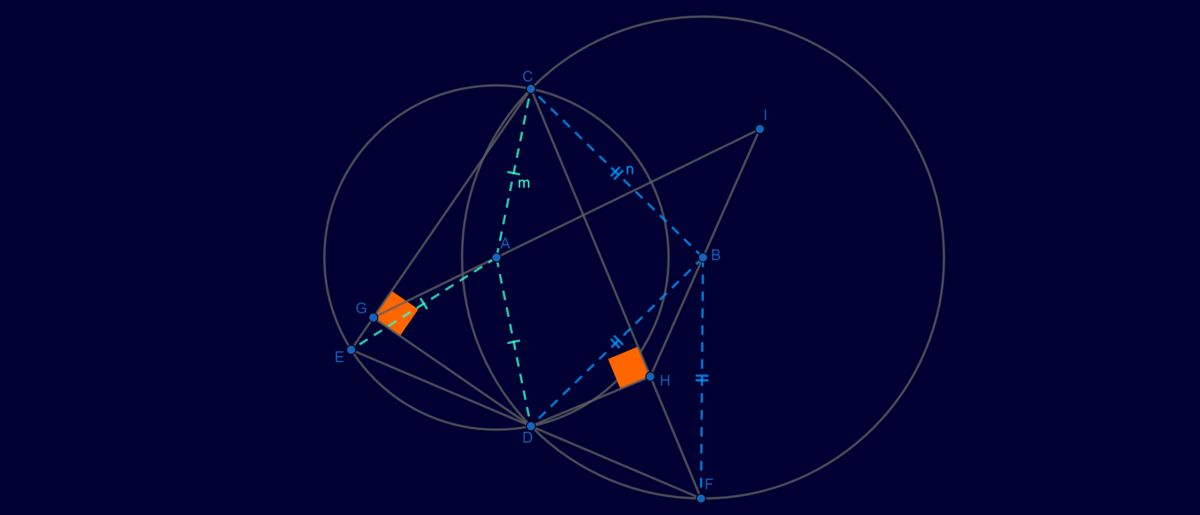Homework is given to a child who is not ready for a math competition - (4).
\((A, m)\) and \((B, n)\) are fixed circles (and \(m > n > AB = p\) is fixed) that intersect at points \(C\) and \(D\). A line passes through \(D\) that intersects \((A)\) and \((B)\) respectively at \(E\) and \(F\). \(DG \perp CE\) at \(G\), \(DH \perp CF\) at \(H\). \(GA\) and \(HB\) intersect at \(I\).
a. Determine the position of such that has the shortest possible length.
b. Determine the locus of as moves but always passes through .

No vote yet
1 vote
Easy Math Editor
This discussion board is a place to discuss our Daily Challenges and the math and science related to those challenges. Explanations are more than just a solution — they should explain the steps and thinking strategies that you used to obtain the solution. Comments should further the discussion of math and science.
When posting on Brilliant:
*italics*or_italics_**bold**or__bold__paragraph 1
paragraph 2
[example link](https://brilliant.org)> This is a quote# I indented these lines # 4 spaces, and now they show # up as a code block. print "hello world"\(...\)or\[...\]to ensure proper formatting.2 \times 32^{34}a_{i-1}\frac{2}{3}\sqrt{2}\sum_{i=1}^3\sin \theta\boxed{123}Comments
There are no comments in this discussion.